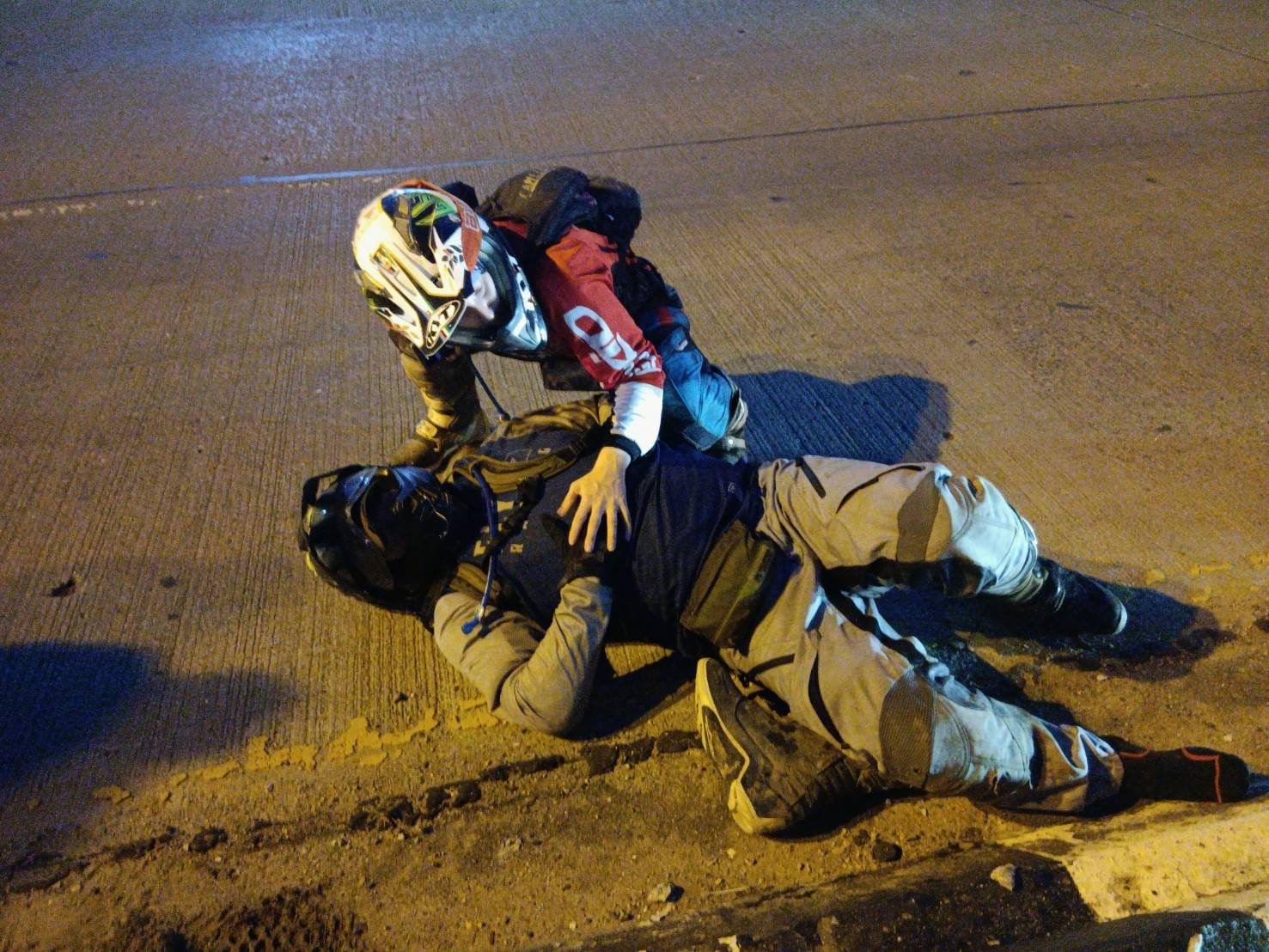
The Accident
There’s a feeling of cold horror when the traffic parts in front of you, and all you see are skid plates.
Don’t get me wrong, I love a good skid plate; heavy duty aluminium, saving that engine case. In fact, I sell them. Two colours, silver or black; short, or with long protection extending under your rear shock.
But they’re not meant to be pointing at the sky. I shouldn’t be seeing that scratched expanse facing me from the underside of a crashed bike. Not on a road. Not among traffic, among the strafing lights of oncoming cars.
Not when I see my friend lying on the road and not getting up.
It puts ice water in my veins.
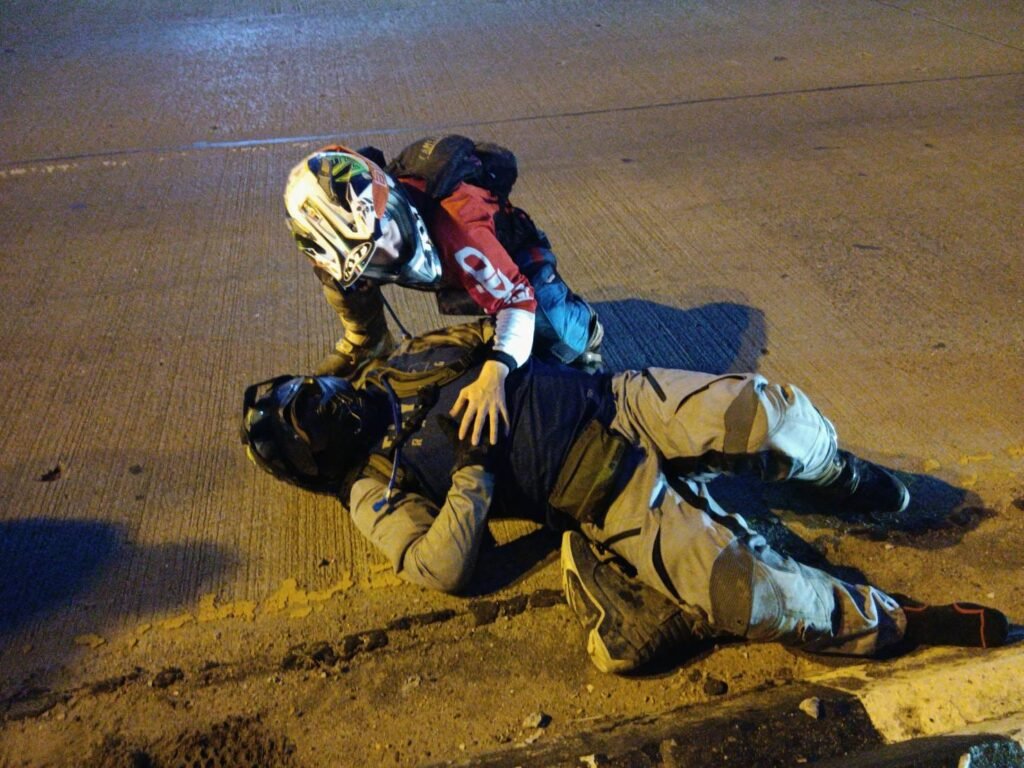
ONE – I check my surroundings. Am I in danger?
TWO – Control the scene. Make sure that nobody runs over the prone body on the road. There are people standing, shocked. I yell at them to control the traffic. I don’t want to be hit by a car while I’m on my knees on the tarmac.
THREE – Assess. IS HE CONSCIOUS IS HE BREATHING IS HE STILL WITH ME. SWEET JESUS. He is. I peer inside the maw of his MX helmet and his eyes are open, his face scrunched in pain. Thank you, thank you, thank you. He’s groaning and it makes me happy, because dead men can’t feel pain.
His boot is a few metres away, near the concrete barrier that ripped it off his leg as he flew through the air. It’s an Alpinestars Tech7. Full enduro boot. Anyone who has ever been dirt biking knows that these boots don’t come off your feet easily, even when you’re trying to get them off after a long day on the bike: sweaty, tired, and dying for a beer.
I immediately think back to Dr John Hinds explaining mechanisms of injury at the Isle of Man TT. Seeing a lone boot on the road is not at all unusual, he explains: it usually indicates that the rider’s foot has touched the ground and twisted backwards at speed. This allows the boot to slip off the backward-facing foot, and indicates a badly broken pelvis.
Today, however, we’re heading home from a dirt biking trip. The upside down bike is a CRF300L and I know for sure that although bad things happened just now, they didn’t happen at speed.
Only seconds have passed but I already know that my friend is breathing, conscious, lucid, and experiencing severe leg pain. He’s lying on the road, on his back, and I won’t let anyone move him. I yell to P’Lah to call the ambulance. We’re in Mae Rim, on the edge of Chiang Mai, which means we’re less than fifteen minutes from excellent hospitals. I’m glad of this. I’m not glad that the ambulance which is coming will be nothing more than a Hilux driven by two guys in flipflops with a backboard, but that’s the price of living in paradise.
I put my hand on my friend’s chest and tell him that it’s all fine, it’s all under control. You’re okay, I say, over and over again. He’s in pain and he’s distressed. He’s also pissed off that this has happened, and worried about his bike.
I ask him if he’s got insurance, and if he wants to go to the best hospital in Chiang Mai? Fuck yes! he says. Which I’m glad about. You might think this is a weird thing to ask a person who’s lying on the road in pain – do you want a good hospital – but if you’re lucky, life goes on after an accident. The first part of the triage process is medical but then, if the medical aspect is not life threatening, another part is checking that you’re going to land your friend with crippling medical debt and a Go Fund Me story.
I let my friend decide if he wants to remove his helmet or not. He’s an emergency nurse trained to handle medical disasters in remote locations; he’s lucid, and he’s undoubtedly the most qualified person on the scene of the accident. I helpfully rob him of all his valuables, taking his wallet and passport off his body and out of his backpack. It’s not so easy to keep an eye on your belongings while immobilised in the back of an ambulance.

Around me, the police have arrived to investigate the accident. I leave that situation entirely in P’Lah’s hands. I know there’s going to be a lot of paperwork, a lot of questions, a lot of taking crashed bikes to police stations and making statements. It’s going to take time and patience, and I know that nobody can handle it better than P’Lah. I have absolute confidence in him. This is our division of labour in an emergency, and I don’t have to give it a second thought.
* * *
One of the most traumatic parts of having an accident in Thailand is the ambulance. This is a glorified taxi with a back board. They’re not going to check your vital signs, and it makes sense, because what would they do about it anyway? If you need more than a paracetamol, you’re pretty much out of luck. So just grit your teeth, and wait for the red glow of the hospital EMERGENCY sign to reflect in the windows. Once you’re through the doors of Bangkok Hospital, everything’s going to be five star.
* * *
I think a lot about how we can provide the best medical support possible in a place where on-scene medical resources are limited. I’ve booked some of HiVolt’s staff to do a 10 day Wilderness First Responder course in a few weeks’ time. This is world-class first aid training focussed on providing intensive medical support in remote areas with limited resources. The instructors are WFR specialists who are flying in from Canada to teach the course, and I’ve ensured that there will be support from bilingual course graduates who can ensure that absolutely nothing is lost in translation.
The instructors are experts in remote first responding; and Aartit is an expert on the jungles of northern Thailand. He knows what resources are available on site, he knows how to harness them, he knows how to use them. After 10 days of intensive first aid training, he’s going to be a first responder superstar.
* * *
I follow the ambulance to the hospital on my dirt bike and wait in the antiseptic waiting room. My hair is plastered to my face with sweat and I am caked in dried mud from our day of dirtbiking. I think about taking off some of my body armour, but decided against it because of the difficulty of then having to carry it all around. It’s better strapped to my body.
I wedge myself in the waiting room chair and watch the faces of the nurses as they come and go.
After an hour or two, they let me in. I stepped through the hissing sliding doors and saw the most wonderful sight. There was my friend, propped up in bed, smiling and flirting with the nurse.
My heart lifted. Everything was going to be okay.






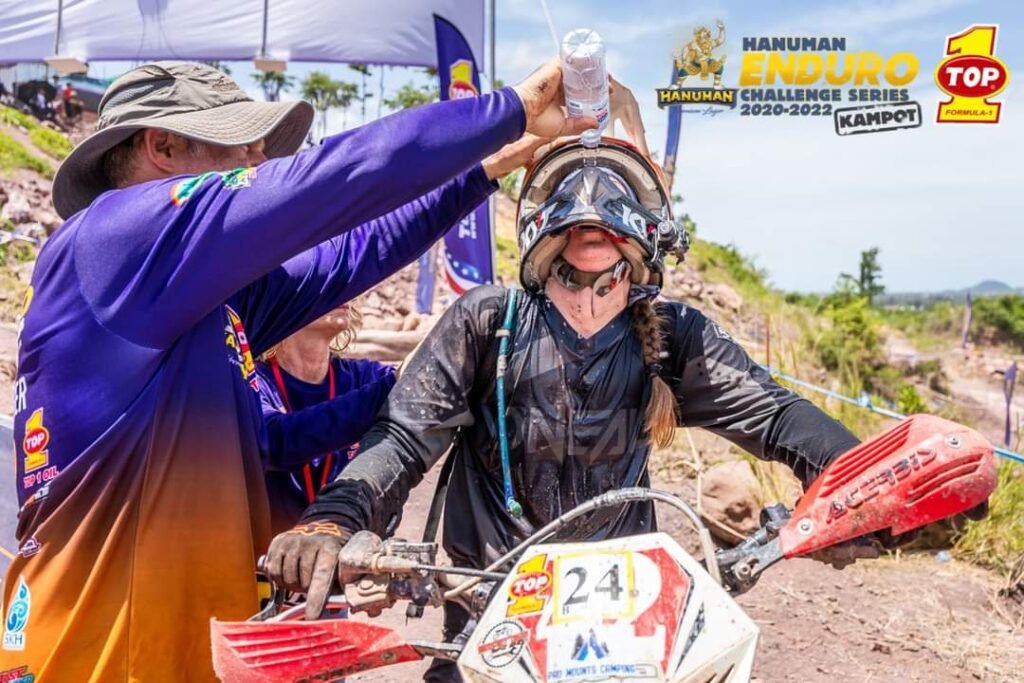
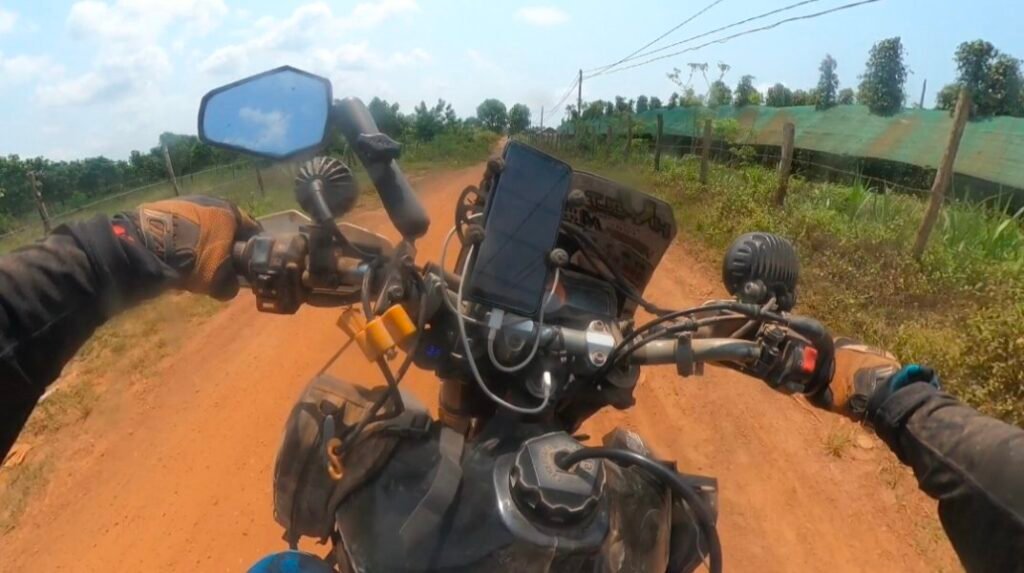


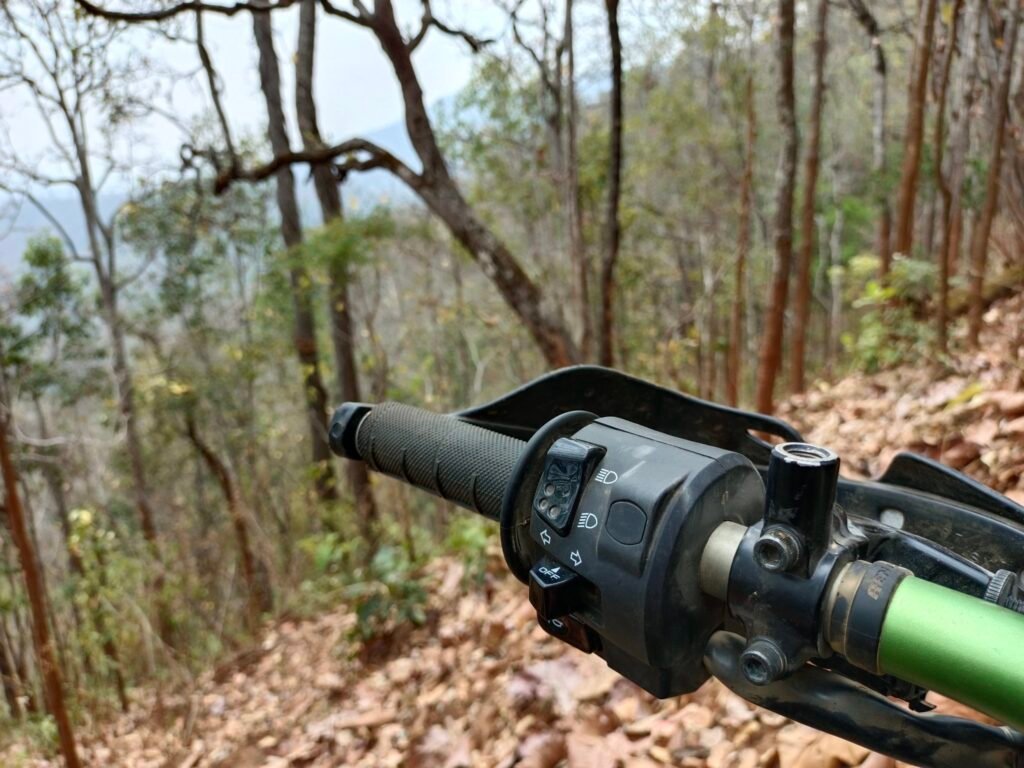
Tragedy avoided. ATGATT and sensible roadside care. Very good to hear he’s OK, Grace.
Far out Grace, could’ve been so much worse eh, so glad big trauma wasn’t the case. He was lucky to have you two there, cool heads in drastic situations equals best outcomes, onya xx
That’s a very good outcome.
Shocking as the accident may have been, all your actions were perfect. And your write up a very good short story. You’re a great writer, Grace, we’ve been missing your skills for too long. Your next episode may not need an accident to start writing 😉 Günter/Nürnberg
Thank you Gunter. I shall be back soon to write of happier things.
Hi there grace. I hope your buddy is doing good. I also hope you’re doing good.
Thank you! I have been off having many more adventures… updates soon 🙂 My friend is doing well, lucky he’s tough!